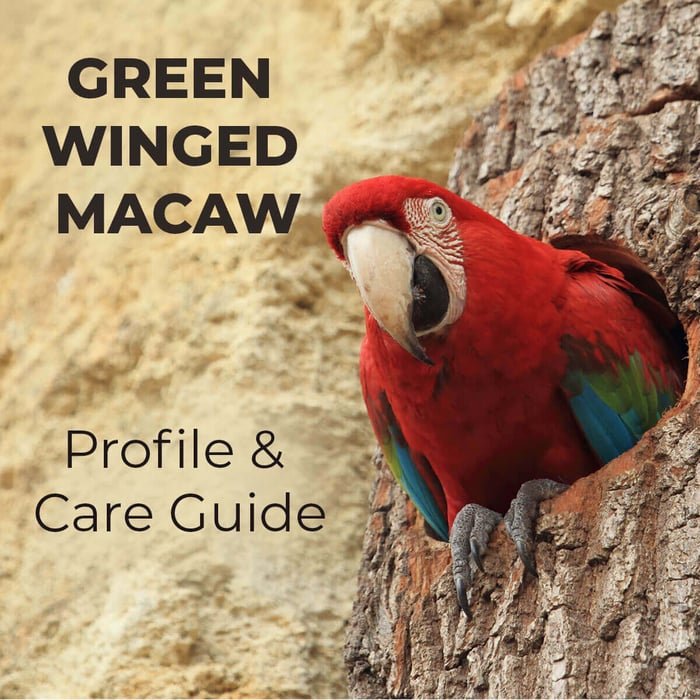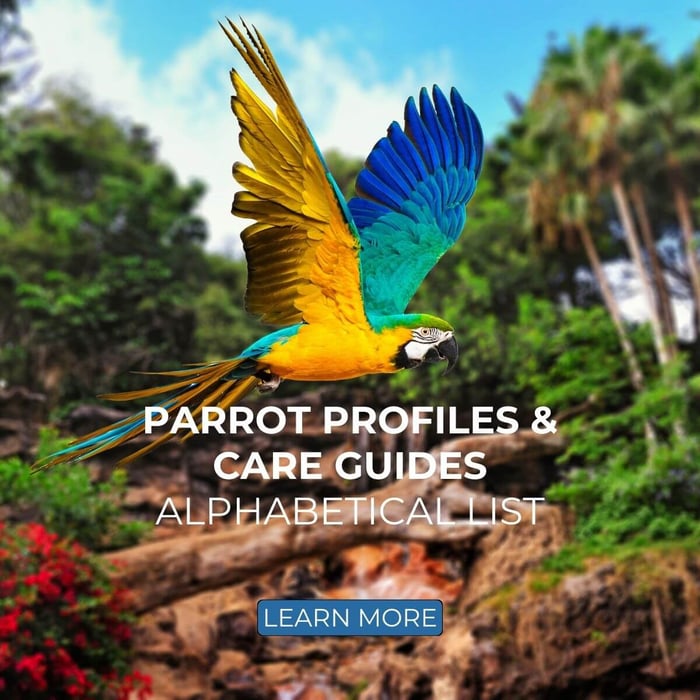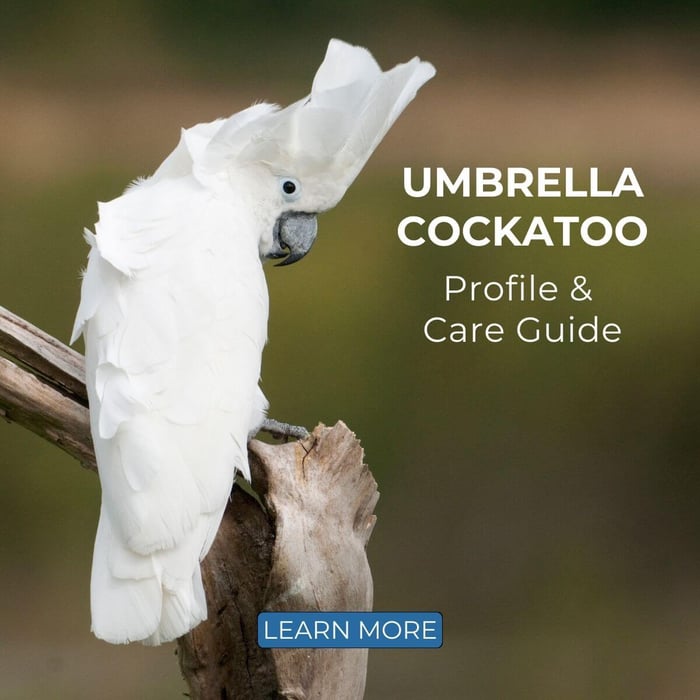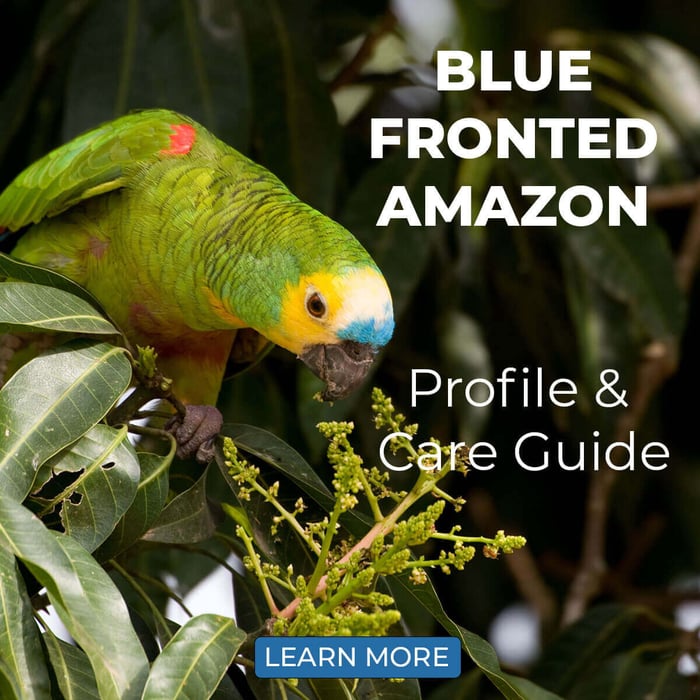Green Winged Macaw – Profile & Care Guide
| Common name: | Green-Winged Macaw |
| Latin name: | Ara chloropterus (sometimes Ara chloroptera) |
| Length: | 95 cm / 37 inches |
| Weight: | 1100 - 1300g |
| Lifespan: | Up to 60 years |
| Origin: | South America |
| Noise Level: | LOUD! |
NATURAL HABITAT
Also known as the red-and-green macaw, the Green-Winged Macaw (Ara chloropterus) is a colourful parrot species naturally found in South America. The largest of its genus, Ara, it can be told apart from the similar scarlet macaw by its partially green wings and its reddish-tinged eye patches.
This macaw can be found in the wild from as far north as northern Colombia to as far south as Paraguay. Here, it inhabits different habitats based on the locality. The species likes terra firme rainforests (which don’t flood seasonally) but also occurs in drier woodland and savannahs. It appears that as long as there are large trees present for nesting, this macaw can thrive.
INTELLIGENCE & PERSONALITY
If you’ve never interacted with a large parrot before, a green-winged macaw can definitely be intimidating. Their large beaks are extremely powerful but don’t worry. They’re known to be gentle giants. A well-socialised green-winged won’t bite, although it may like to touch your fingers with its tongue! It’ll enjoy hanging out, receiving head scratches and training sessions.
A bit more outgoing than some of the other macaws, a green-winged macaw can make a very affectionate pet. They are also known to be among the more intelligent of the genus, meaning they’re quick to learn tricks. Lastly, macaws love to party. Some music, playtime and permission to scream freely are their idea of a perfect afternoon spent with their owner.
Green-winged macaws can adapt very quickly to a new environment and will soon become an outstandingly loving member of the family.
GREEN-WINGED MACAW TALKING ABILITY
Green and red macaws can be reasonably talented talkers. This does depend on the individual, though. Some are just not interested in learning to imitate human speech. You shouldn’t buy a parrot based on its potential to talk.
What a macaw will do more than anything is scream. It’s just what parrots do! They scream when they’re hungry when they want attention, and even just because they can. It’s very important to keep their noise level in mind and thoroughly consider whether you can handle it before you add one to your family.
It can be a good idea to visit rescues or anyone in your environment who has a macaw to hear what they sound like. This is not an apartment-type bird!
FEEDING & NUTRITION
Wild green and red macaws are known to be mostly frugivores. They eat fruits that we’re not familiar with here but that are somewhat well-known in their natural range. Examples include palm fruit, pequi, and a pod called the stinking toe fruit!
Domestic green-winged macaws are generally not fussy eaters, so keeping yours well-fed should be easy enough. A balanced, pellet-based diet makes a good staple. Although these have historically been popular choices, you shouldn’t feed sunflower seeds, peanuts, and other seed mixes daily. They’re too high in fat and low in nutrients to keep your bird healthy in the long run.
To provide variety and additional nutrients, supplement pellets with an array of foods. Try soaked or sprouted sunflower seeds, fruits and vegetables like corn on the cob, banana, and orange, as well as various nuts like walnuts, peanuts, pecans, Brazil nuts, and pine nuts. Even some cooked lean chicken or boiled egg is okay from time to time.
Hygiene is also important. Always ensure that fresh, clean water is readily available. Food and water dishes should be washed on a daily basis to maintain a clean feeding environment.

HOUSING FOR YOUR GREEN-WINGED MACAW
Investing in a spacious cage is crucial for the well-being of your green-winged macaw. The larger the cage, the better, as these are big birds that require ample room to move and spread their wings. Being stuck in a cramped space and unable to exercise can lead to obesity and health issues in parrots, not to mention stress.
The ideal would be to provide your green-wing with access to a large outdoor enclosure, ideally at least 15 meters long, where it can fly freely for part of the year.
The placement of the indoor cage is another important consideration. Locate it in a part of the house where your macaw will have frequent interaction with people, as this socialisation is vital for their mental health. Do avoid areas that are draughty, near an A/C unit or heater, or in direct sun.
Don’t underestimate the importance of strong, durable toys. Green-winged macaws, like most parrots, are prolific chewers who can easily destroy less sturdy playthings. They need a constant supply of new and exciting macaw parrot toys to shred in order to prevent them from getting bored.
Lastly, allow your bird a minimum of 3 to 4 hours outside of the cage each day. This out-of-cage time is essential for exercise and exploration and so your parrot can interact with you. You can get a parrot stand for it to hang out on while it’s out and about.

GREEN-WINGED MACAW FEATHER PLUCKING
Whilst it is not as common for these macaws (as in African Grey parrots or cockatoos), to pluck their own feathers, it does still happen. They do require lots of mental stimulation.
Boredom, stress, and loneliness are big factors in feather plucking, though you should also rule out physical causes, such as skin irritation, if you notice your bird doing it.
GREEN-WINGED MACAW FACTS
- Although the IUCN lists the green-winged macaw as a species of Least Concern, it does note the population appears to be declining. This is likely due to a combination of habitat loss and poaching for the pet trade.
- The green-winged macaw’s range once stretched into Argentina, but it unfortunately disappeared as a result of human activity. Thankfully, efforts to reintroduce them have appeared to be successful.
- Like other parrots, the green-winged macaws in the wild will visit clay licks to eat soil to obtain essential minerals and cleanse their digestive systems.
- Plumage: Green-winged macaws have predominantly green feathers on their body, but their wings are a striking combination of red & green. This colouration makes them easily distinguishable from other macaw species.
- These macaws are among the largest parrots in the world.
- Lifespan: These macaws can live for an impressive 50 to 60 years or even longer in captivity when provided with proper care.
- Distinctive Facial Pattern: They have a distinct facial pattern with a bare patch of skin around their eyes and a narrow line of featherless skin along the base of their lower beak.
- Diet: Green-winged macaws primarily feed on a diet of fruits, nuts, seeds, and vegetation. In captivity, they should be provided with a well-balanced diet to maintain their health.
- Social Creatures: Like many parrot species, green-winged macaws are highly social and form strong bonds with their mates and human caregivers. They thrive on interaction and attention.
- Impressive Vocal Abilities: They have loud and expressive calls, which can be heard over long distances in their natural habitat. These calls serve to communicate with their flock and warn of potential threats.
- Intelligence: These macaws are highly intelligent birds and are very easy to train to perform tricks and mimic human speech. Their intelligence makes them popular pets among bird enthusiasts.

CONCLUSION
Green-winged macaws are highly sociable creatures that naturally live in pairs or flocks. They thrive on daily interaction and enjoy being part of the family routine and activities. Pair this with their high intelligence level, and one could say owning a macaw is not unlike having a feathered toddler!
While they are characteristically rowdy, loving, intelligent and very loud, these birds can make fantastic pets for owners who are dedicated, responsible, and well-informed. Their distinct personalities and needs make them uniquely rewarding companions, but they’re not a good choice for beginners, those with young children, or apartment dwellers.
Parr, M., & Juniper, T. (2010). Parrots: a guide to parrots of the world. Bloomsbury Publishing.
To view other Parrot Profiles & Care Guides, visit our Alphabetical list of Parrot Fact Sheets by visiting https://parrotessentials.co.uk/blog/parrot-profiles-care-guides




